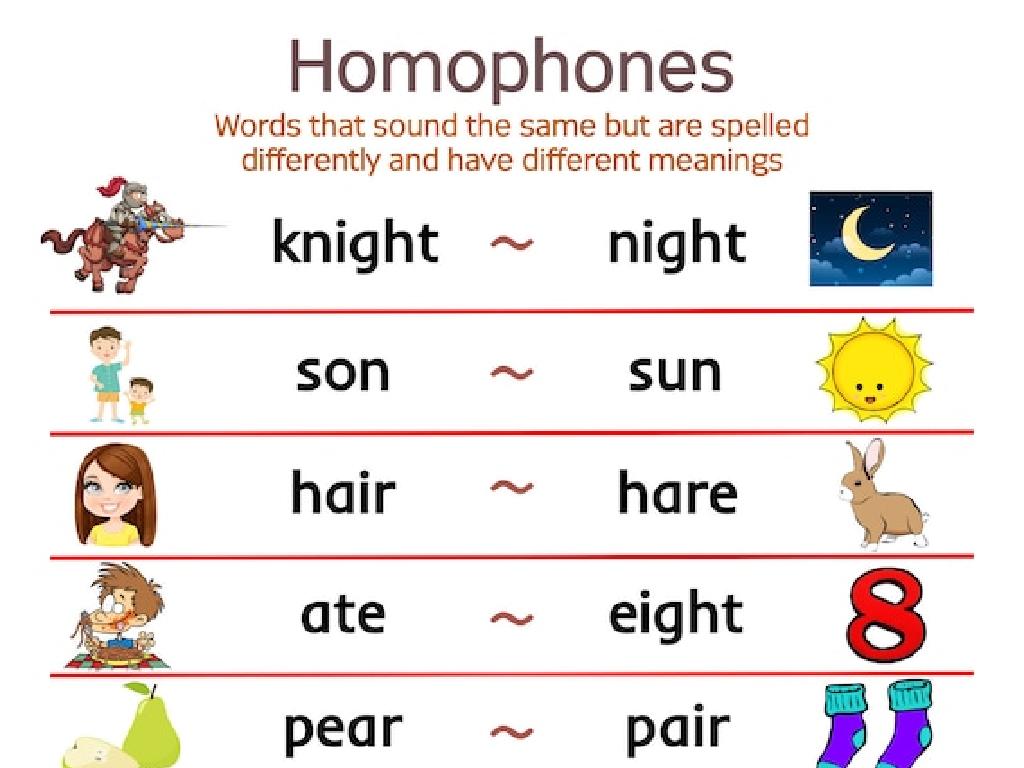Ancient Egypt: The Old Kingdom
Subject: Social studies
Grade: Seventh grade
Topic: Ancient Egypt And Kush
Please LOG IN to download the presentation. Access is available to registered users only.
View More Content
Exploring the Old Kingdom of Ancient Egypt
– Introduction to Egypt and Kush
– Timeline of the Old Kingdom
– The Old Kingdom era lasted from about 2686 to 2181 BCE.
– Significance of the Old Kingdom
– Known as the ‘Age of the Pyramids’, the Old Kingdom was a period of prosperity and cultural development.
– Key achievements and monuments
– The Great Pyramids of Giza and the Sphinx were constructed during this time.
|
This slide introduces students to the grandeur of Ancient Egypt during the Old Kingdom, one of the most fascinating periods in Egyptian history. It’s essential to provide a brief overview of Egypt and Kush’s geography and culture before delving into the timeline. The Old Kingdom is often referred to as the ‘Age of the Pyramids’ due to the construction of the most enduring symbols of Egypt’s ancient civilization. Highlight the period’s stability, advancements in art and architecture, and the development of a centralized government. Discuss the significance of the pyramids and the Sphinx as cultural achievements and their role in Egyptian society. Encourage students to think about how these monumental structures might have influenced both the ancient world and our understanding of it today.
Geography of Ancient Egypt: The Old Kingdom
– Significance of the Nile River
– The Nile was Egypt’s lifeline, providing water, transportation, and fertile soil.
– Natural barriers’ role
– Deserts, seas, and cataracts protected Egypt from invasions and influenced its culture.
– Agriculture in the Old Kingdom
– Relied on yearly flooding for fertile land to grow crops like wheat and flax.
– Settlement patterns along the Nile
– People settled along the river’s banks, forming a civilization with centralized control.
|
This slide aims to highlight the crucial role geography played in the development of Ancient Egypt during the Old Kingdom. The Nile River was the centerpiece of Egyptian civilization, offering a source of sustenance, a means of transport, and fertile lands due to its annual floods. The natural barriers, including deserts and cataracts, provided security and isolation, fostering a unique culture. Agriculture was the economic foundation, with the river’s inundation creating arable land for essential crops. Settlements were strategically located along the Nile, leading to the emergence of a structured society with a strong central government. Encourage students to consider how geography can shape the development of a civilization and compare it to modern examples.
The Pharaohs and their Role in the Old Kingdom
– ‘Divine Kingship’ explained
– Pharaohs were seen as gods, ruling as divine figures.
– Pharaohs’ key responsibilities
– They were leaders, lawmakers, and religious figures.
– Notable Old Kingdom Pharaohs
– Khufu, builder of the Great Pyramid; Djoser, known for the Step Pyramid.
– Impact of Pharaohs’ rule
– Their decisions shaped Egypt’s culture, economy, and architecture.
|
This slide introduces students to the concept of ‘Divine Kingship’ in Ancient Egypt, where Pharaohs were not just rulers but were also considered gods on Earth. It’s crucial to discuss the multifaceted role of a Pharaoh, including their responsibilities as political leaders, lawmakers, and religious authorities. Highlight famous Pharaohs like Khufu and Djoser, who left behind monumental legacies such as the Great Pyramid of Giza and the Step Pyramid of Saqqara. Discuss how the Pharaohs’ decisions and leadership styles had a lasting impact on the development of Egyptian civilization, including its culture, economy, and iconic architecture. Encourage students to think about how the concept of leadership in ancient times compares to leadership today.
Social Hierarchy and Daily Life in the Old Kingdom
– Egyptian society’s class structure
– Pharaohs at top, slaves at bottom
– Daily routines across social classes
– Farmers worked fields, artisans created goods, nobles managed affairs
– Gender and age roles in society
– Men were heads of families, women managed homes, some had jobs
– Children’s life in the Old Kingdom
– Education for boys, helping family for most children
|
This slide aims to give students a clear understanding of the social structure and daily life during the Old Kingdom of Egypt. Emphasize the rigid class system, with pharaohs at the top and slaves at the bottom. Discuss the typical daily activities of different classes, such as farmers tending to fields and nobles overseeing administrative tasks. Highlight the roles of men, women, and children, noting that while men were typically the family leaders, women could own property and had various degrees of independence. Children’s roles varied, with education being a privilege for boys, especially from noble families, while most children contributed to family work. Encourage students to compare and contrast these roles with modern society.
Religion and Beliefs in the Old Kingdom
– Egyptian gods and goddesses
– A diverse pantheon with gods like Ra and Anubis
– Beliefs about the afterlife
– Egyptians believed in an eternal life after death
– Significance of mummification
– Preserving the body was crucial for the afterlife journey
– Role of pyramids in religion
– Pyramids were tombs for pharaohs, ensuring their immortality
|
This slide delves into the religious beliefs of Ancient Egypt during the Old Kingdom. The Egyptians worshipped a multitude of deities, each with unique roles and attributes. The afterlife was a central aspect of their belief system, with the dead journeying to an eternal life. Mummification was a critical practice to ensure the deceased’s body remained intact for this journey. Pyramids, monumental tombs for the pharaohs, were believed to facilitate their transformation into gods in the afterlife. Discuss the connection between these practices and the importance of religion in governing and daily life in Ancient Egypt.
The Great Pyramids of Giza: Wonders of the Old Kingdom
– Construction techniques of the pyramids
– Used ramps and sledges to move massive stones
– Pyramids: Tombs of pharaohs
– Built as monumental tombs to honor and house pharaohs’ spirits
– Builders: Skilled workers, not slaves
– Organized labor force of farmers during the flood season
– The enduring mystery of the pyramids
– Many theories about construction; still a subject of research
|
This slide aims to give students a glimpse into the grandeur of the Great Pyramids of Giza during the Old Kingdom of Ancient Egypt. Discuss the sophisticated construction techniques that were used without modern machinery, emphasizing the use of ramps and sledges. Explain that the pyramids served as tombs for pharaohs, designed to ensure their journey to the afterlife. Clarify the misconception that slaves built the pyramids; instead, it was a paid and skilled workforce. Lastly, delve into the mysteries that still surround the pyramids, such as the exact methods of construction and their precise alignment with celestial bodies, which continue to intrigue researchers and historians today. Encourage students to explore these mysteries and consider the legacy of the pyramids as one of the world’s greatest architectural feats.
Art and Writing in the Old Kingdom
– Significance of art in Old Kingdom
– Art depicted daily life, beliefs, and was used in tombs for the afterlife.
– Basics of hieroglyphics
– Hieroglyphics was the writing system combining logographic and alphabetic elements.
– Art as a historical clue
– Artifacts like paintings and carvings show aspects of daily life, culture, and governance.
– Interpreting life through artifacts
|
This slide aims to explore the importance of art and writing in understanding the Old Kingdom of Egypt. Art served multiple purposes, including religious significance and documenting daily life. Hieroglyphics, the ancient Egyptian writing system, was used to record important events and spiritual texts. By examining art and hieroglyphics, historians and archaeologists can piece together a picture of life during this period. Students should understand that these artifacts are more than just decorative; they are valuable historical documents that provide insight into the civilization’s social structure, culture, and beliefs. Encourage students to think about what our own art and writing might tell future generations about our society.
Class Activity: Hieroglyphics Decoding
– Step into scribes’ shoes
– Write your name in hieroglyphics
– Use the hieroglyphic alphabet chart
– Craft a secret hieroglyphic message
– Think like an ancient Egyptian, what would you say?
– Exchange messages for decoding
– Swap with a partner and decode each other’s work
|
This interactive class activity is designed to immerse students in the world of ancient Egyptian scribes. Provide each student with a hieroglyphic alphabet chart. They will start by writing their names using hieroglyphs to get familiar with the script. Next, they’ll create a short message or sentence in hieroglyphics, which could be a greeting, a common phrase, or something about themselves. Once completed, students will exchange their messages with a classmate and attempt to decode them. This exercise not only makes learning about ancient Egypt fun but also enhances their understanding of the importance of writing in ancient civilizations. Possible variations of the activity could include decoding a famous ancient Egyptian phrase, creating a hieroglyphic art piece, or writing a short story in hieroglyphs.






